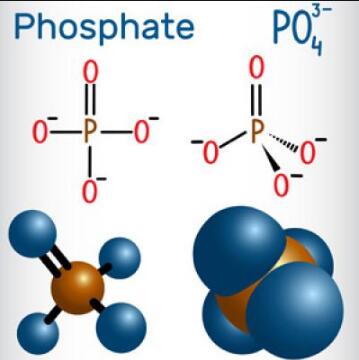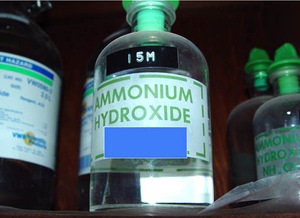Ammonia-Health Hazard and Toxicity
Sep 5,2019
Description
Ammonia, a colorless gas with a distinct odor, is a building-block chemical and a key component in the manufacture of many products people use every day. It occurs naturally throughout the environment in the air, soil and water and in plants and animals, including humans. The human body makes ammonia when the body breaks down foods containing protein into amino acids and ammonia, then converting the ammonia into urea.
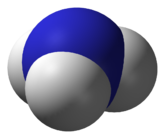
Health Hazard
Vapors cause irritation of eyes and respiratory tract. Liquid will burn skin and eyes. Poisonous; may be fatal if inhaled. Contact may cause burns to skin and eyes. Contact with liquid may cause frostbite.
Toxicity
Ammonia gas is extremely corrosive and irritating to the skin, eyes, nose, and respiratory tract. Exposure by inhalation causes irritation of the nose, throat, and mucous membranes. Lacrimation and irritation begin at 130 to 200 ppm, and exposure at 3000 ppm is intolerable. Exposure to high concentrations (above approximately 2500 ppm) is life threatening, causing severe damage to the respiratory tract, resulting in bronchitis,
chemical pneumonitis, and pulmonary edema, which can be fatal. Eye contact with ammonia vapor is severely irritating, and exposure of the eyes to liquid ammonia or mists can result in serious damage, which may result in permanent eye injury and blindness.
Skin contact with ammonia vapor, mists, and liquid can cause severe irritation and burns;contact with the liquid results in cryogenic burns as well. Ingestion of liquid ammonia burns the tissues, causing severe abdominal pain, nausea, vomiting, and collapse and can be fatal. Ammonia gas is regarded as having adequate warning properties.
Ammonia has not been found to be carcinogenic or to show reproductive or developmental toxicity in humans. Chronic exposure to ammonia can cause respiratory irritation and damage.
Flammability and Explosibility
Ammonia vapor is slightly flammable (NFPA rating = 1) and ignites only with difficulty. Ammonia forms explosive mixtures with air in the range 16 to 25%.Water, carbon dioxide, or dry chemical extinguishers should be used for ammonia fires.
Reactivity and Incompatibility
Ammonia vapors or solutions can react with compounds of silver, gold, and mercury to produce unstable and highly explosive products. Do not use a mercury manometer for measuring ammonia gas pressure. Highly explosive nitrogen halides can form in reactions of ammonia with halogens, hypohalites, and similar compounds. Violent reactions can occur with oxidizing agents such as chromium trioxide, hydrogen peroxide, nitric acid, sodium and potassium nitrate, chlorite, chlorate, and bromate salts.
Storage and Handling
Anhydrous ammonia should be handled in the laboratory using the ''basic prudent practices" described in Chapter 5.C, supplemented by the procedures for work with compressed gases discussed in Chapter 5.H. All work with ammonia should be conducted in a fume hood to prevent exposure by inhalation, and splash goggles and impermeable gloves should be worn at all times to prevent eye and skin contact.
Cylinders of ammonia should be stored in locations appropriate for compressed gas storage and separated from incompatible compounds such as acids, halogens, and oxidizers. Only steel valves and fittings should be used on ammonia containers; copper, silver, and zinc should not be permitted to come into contact with ammonia.
Accidents
Prompt medical attention is required in all cases of overexposure to ammonia. In the event of skin contact, immediately wash with soap and water and remove contaminated clothing. In case of eye contact, promptly wash with copious amounts of water for 15 min (lifting upper and lower lids occasionally) and obtain medical attention. If ammonia is ingested, obtain medical attention immediately. If large amounts of ammonia are inhaled, move the person to fresh air and seek medical attention at once.
In the event of a gaseous ammonia leak, shut down all ignition sources and ventilate the area at once to prevent flammable mixtures from forming. Carefully remove cylinders with slow leaks to a fume hood or remote outdoor location. Limit access to an affected area. Respiratory protection may be necessary in the event of a large release in a confined area.
Disposal
Cylinders containing excess ammonia should be returned to the manufacturer.Ammonia gas may also be dissolved in water for neutralization and disposal. In some localities, aqueous ammonia may be disposed of down the drain after appropriate neutralization and dilution. If ammonia gas is directed into water,precautions should be taken to prevent the suckback of water into the ammoniacontaining vessel or cylinder. Dissolution of ammonia in water is accompanied by heat evolution. In a fume hood, the diluted ammonia solution should be neutralized
with a nonoxidizing strong acid such as HCl. The resulting solution can be discharged to the sanitary sewer. If drain disposal is not permitted, the aqueous ammonia should be placed in an appropriate container, clearly labeled, and handled according to your institution's waste disposal guidelines.
- Related articles
- Related Qustion
- Ammonia synthesis and Ammonia uses Jul 23, 2024
Ammonia gas is easily compressed and forms a clear, colorless liquid under pressure. It is usually shipped as a compressed liquid in steel cylinders.
- What is the conjugate base of NH3?Is it amphotericital? Mar 21, 2024
The conjugate base of NH3 is NH2- which is known as the azide anion.
- What is the connection between Hydrogen peroxide and ammonia? Mar 20, 2024
The synergistic effect of hydrogen peroxide and ammonia strengthened the ammonolysis effect, whereas it weakened the oxidation effect.
White phosphorus is a highly toxic substance by all routes of exposure. Contact of the solid with the skin produces deep painful burns, and eye contact can cause severe damage. Ingestion of phosphorus leads (after a delay of a few hours) to....
Sep 5,2019Inorganic chemistryAmmonium hydroxide (NH4OH) is a solution of ammonia in water. Commonly called ammonia or ammonia water, the chemical is used as a cleanser and in manufacturing plastics, rubber, fertilizer and textiles.It's a colorless, clear liquid with a....
Sep 5,2019Inorganic chemistryAmmonia
7664-41-7You may like
- Ammonia
-
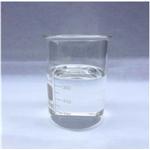
- $40.00 / 10Liters
- 2025-09-26
- CAS:7664-41-7
- Min. Order: 10Liters
- Purity: 99.99%
- Supply Ability: 100Tons
- Ammonia
-
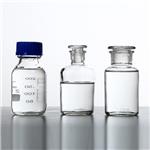
- $2.00/ kg
- 2024-12-17
- CAS:7664-41-7
- Min. Order: 10000kg
- Purity: 99%
- Supply Ability: 10000000
- Ammonia
-

- $1.00 / 1KG
- 2019-12-23
- CAS:7664-41-7
- Min. Order: 1g
- Purity: 85.0-99.8%
- Supply Ability: 20ton




